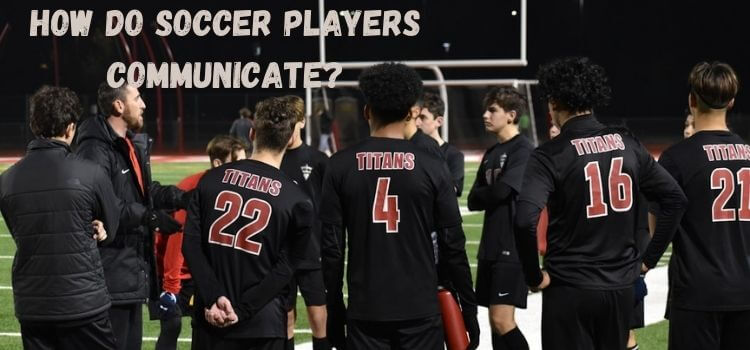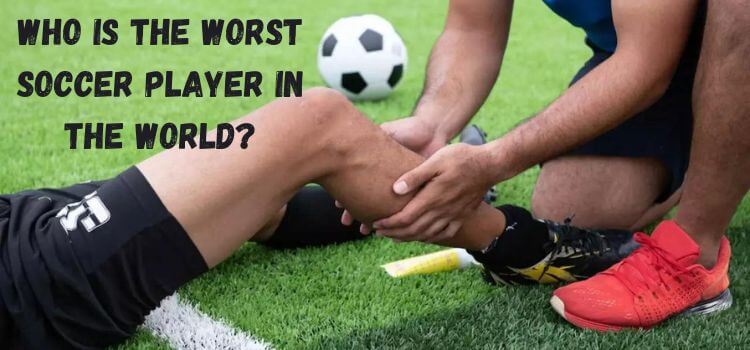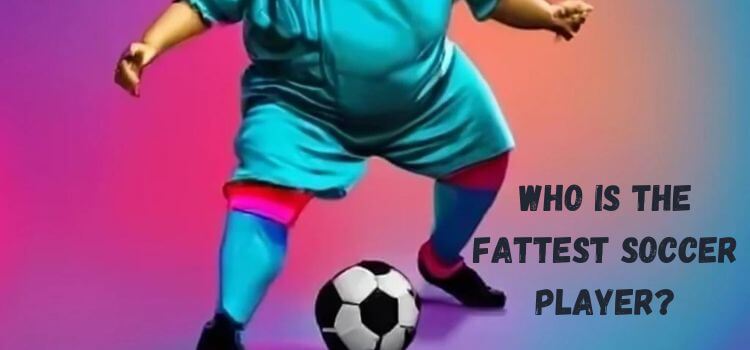As an Amazon Associate, I earn from qualifying purchases
Have you ever wondered how soccer players seamlessly coordinate their movements, execute intricate strategies, and communicate on the field amidst the chaos of a match?
Understanding how soccer players communicate is key to unlocking the intricacies of the beautiful game. From subtle gestures to vocal cues, effective communication is the backbone of successful teamwork in soccer.
In this guide, we delve into the various methods through which soccer players communicate, shedding light on the language that transcends linguistic barriers to unite players in pursuit of victory. So, let’s explore the silent signals, tactical shouts, and strategic exchanges that shape the dynamics of soccer communication.

Verbal Communication on the Field
Calling for the Ball:
One of the most common forms of verbal communication in soccer is players calling for the ball. By vocalizing their position and readiness to receive a pass, players can help their teammates make informed decisions during gameplay.
Directing Teammates:
In addition to calling for the ball, players often use verbal cues to direct their teammates’ movements. This can include instructions to press forward, fall back into defense, or mark specific opponents.
Non-verbal Communication
Body Language Cues:
Soccer players also rely on non-verbal communication cues such as hand gestures, nods, and pointing to convey information to their teammates. These subtle signals can be beneficial in noisy or crowded environments where verbal communication may be difficult.
Eye Contact:
Maintaining eye contact with teammates is another essential aspect of non-verbal communication in soccer. Eye contact can help players establish understanding and anticipation, allowing for more effective coordination on the field.
Understanding Team Dynamics
Knowing Teammates’ Playing Styles:
Successful communication in soccer often relies on players’ understanding of their teammates’ playing styles and preferences. By familiarizing themselves with each other’s tendencies, players can anticipate movements and make split-second decisions with greater accuracy.
Building Trust:
Effective communication is built on trust among teammates. Players can promote a sense of confidence and unity within the team by reliably making correct passes, offering prompt assistance, and keeping their word.
Communication Tactics During Set Pieces
Corner Kicks:
Set pieces such as corner kicks require precise coordination among players. Verbal communication is often used to plan strategies and execute plays, ensuring that each player knows their role and responsibilities.
Free Kicks:
Similar to corner kicks, free kicks present opportunities for strategic communication among players. By coordinating their movements and positioning, players can maximize their chances of scoring or creating scoring opportunities.
Language Barriers
Overcoming Language Differences:
Language barriers can challenge effective communication in multicultural teams. Players must find ways to overcome these barriers, whether through learning basic phrases in each other’s languages or relying on universal soccer terminology.
Using Universal Soccer Language:
Despite language differences, soccer players often rely on a standard set of gestures and signals to communicate on the field. These universal cues help bridge language gaps and facilitate seamless coordination during gameplay.
Captains and Leaders
Their Role in Facilitating Communication:
Captains and team leaders have a critical responsibility to facilitate communication among players. By setting an example through their communication skills and providing guidance to teammates, captains can help ensure clarity and cohesion on the field.
Technology in Communication
Headsets and Earpieces:
In professional soccer, teams may use headsets and earpieces to facilitate real-time communication between players and coaches. These devices allow for instant Feedback and strategic adjustments during matches.
Use of Hand Signals:
Hand signals are another technological tool used by soccer players to communicate on the field. Coaches and players may develop specific signals to convey tactical instructions or indicate plays without alerting opponents.
Practice and Drills for Communication
Team Exercises:
Effective communication in soccer can be honed through dedicated practice and drills. Team exercises such as passing drills, positional play simulations and small-sided games can help players improve their communication skills under pressure.
Improving Communication Skills:
Beyond structured drills, players can also work on improving their communication skills through individual practice and self-awareness. By actively seeking input from coaches and teammates, players can find opportunities for growth and improve their communication skills.
Coach’s Role
Emphasizing Communication in Training:
Coaches play a pivotal role in fostering effective communication within their teams. By emphasizing the importance of communication in training sessions and providing opportunities for players to practice and develop their skills, coaches can help create a cohesive and well-coordinated team.
Providing Feedback:
Coaches should also provide constructive Feedback to players on their communication efforts. By offering specific guidance and encouragement, coaches can help players refine their communication techniques and become more effective communicators on the field.
Communication Mistakes and How to Avoid Them
Miscommunication Leading to Errors:
Poor communication in soccer can lead to costly mistakes and missed opportunities. Common communication errors include:
- Failing to provide clear instructions.
- Misunderstanding teammates’ intentions.
- Hesitating to communicate under pressure.
Strategies for Clearer Communication:
To avoid communication breakdowns, players can adopt strategies such as using simple and direct language, maintaining constant communication throughout the game, and actively listening to their teammates’ cues and instructions.
Adaptability in Communication
Adjusting Communication Style During Games:
Soccer is a dynamic sport where players must modify their communication approach based on shifting conditions. Whether reacting to shifts in momentum, adjusting to opponent tactics, or responding to unforeseen developments on the field, players must remain flexible and adaptable in their communication approach.
Reacting to Changes on the Field:
Effective communication in soccer also involves quickly reacting to changes in the game environment. Whether through verbal cues, non-verbal signals, or spontaneous adjustments, players must communicate proactively to maintain a strategic advantage and respond effectively to evolving situations.
Building a Unified Team
Importance of Effective Communication in Team Cohesion:
Ultimately, effective communication is essential for building a unified and cohesive team. By developing open channels of communication, appreciating one another, and working toward a single objective, teams can realize their full potential and excel on the field.
Case Studies
Examples of Successful Communication on the Field:
Numerous examples exist of teams demonstrating exceptional communication skills in soccer. From last-minute game-winning goals to meticulously executed set-piece routines, these case studies highlight the pivotal role that communication plays in achieving success on the soccer field.
Conclusion
In soccer, communication is the lifeblood of successful teamwork. From verbal instructions to non-verbal signals, effective communication allows players to coordinate their actions, anticipate movements, and capitalize on scoring opportunities.
By understanding the importance of communication, honing their skills through practice and drills, and embracing adaptability on the field, soccer players can elevate their game and achieve victory as a unified team.
FAQs (Frequently Asked Questions)
Communication allows players to coordinate their actions, anticipate movements, and capitalize on scoring opportunities, ultimately contributing to team success.
Language barriers can present challenges to effective communication in multicultural teams, but players can overcome these obstacles by learning basic phrases, using universal soccer terminology, and relying on nonverbal cues.
Captains and leaders set an example through their communication skills, provide guidance to teammates, and help ensure clarity and cohesion on the field.
Common communication mistakes include failing to provide clear instructions, misunderstanding teammates’ intentions, and hesitating to communicate under pressure.
Players can improve their communication skills through practice, self-awareness, seeking Feedback from coaches and teammates, and adopting strategies such as using simple and direct language.
Read Our More Articles
- Why Are Soccer Players So Dramatic? A Comprehensive Guide
- What Soccer Player Are You? A Comprehensive Guide
- Which Soccer Player Am I? Unveiling the Trendy Personality Quiz
As an Amazon Associate, I earn from qualifying purchases


